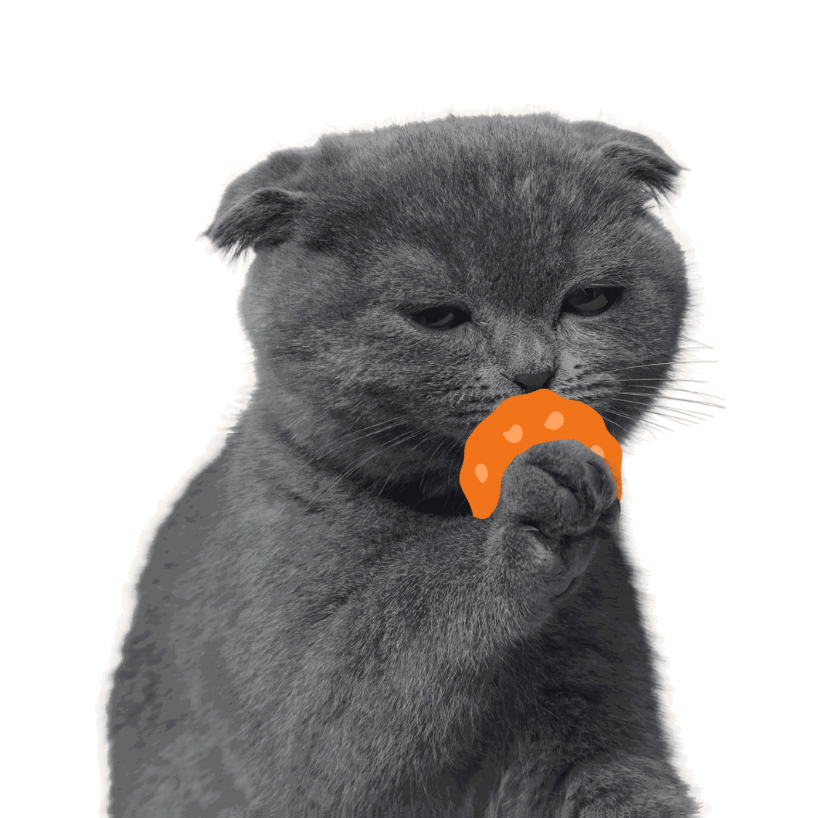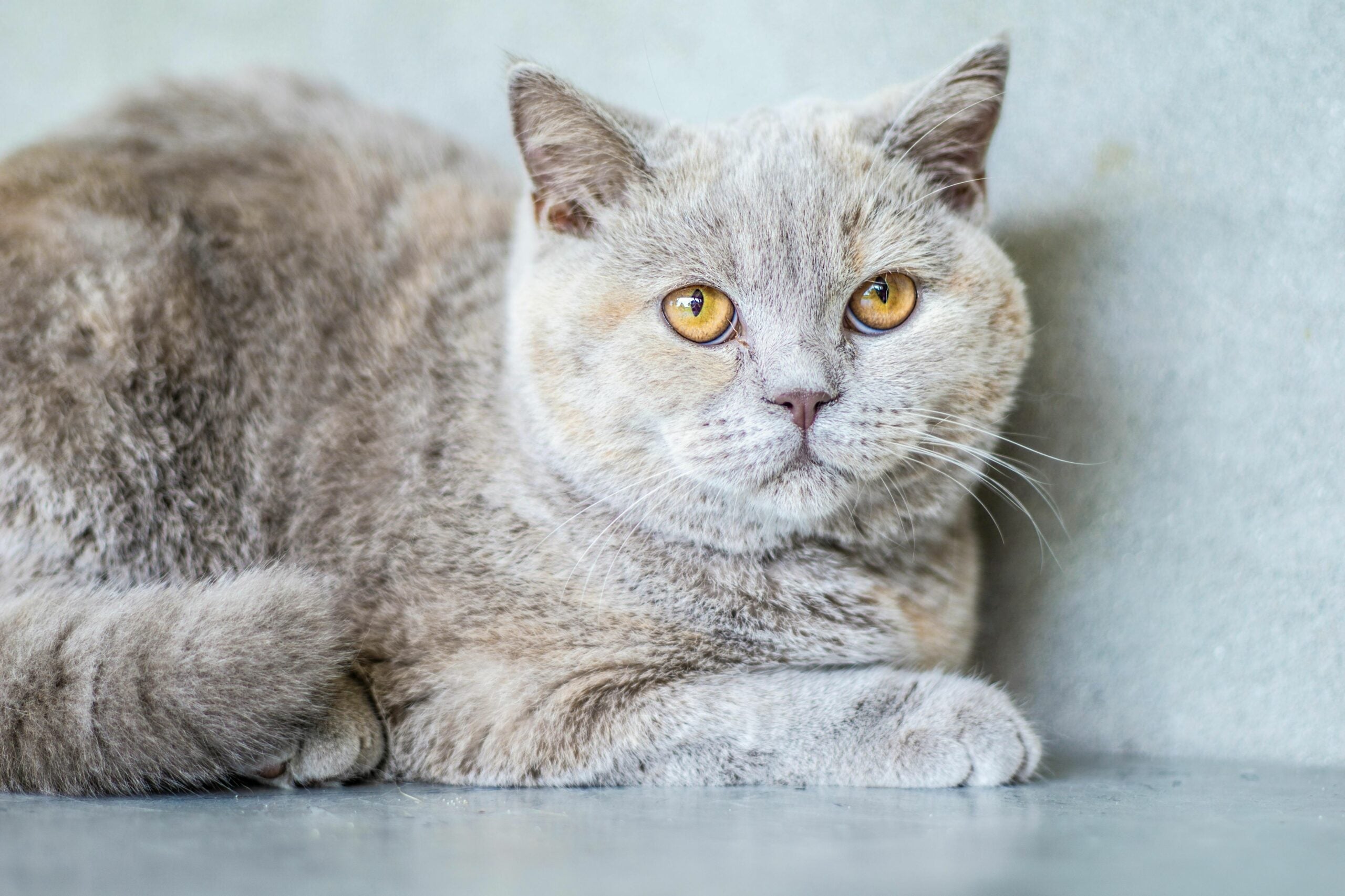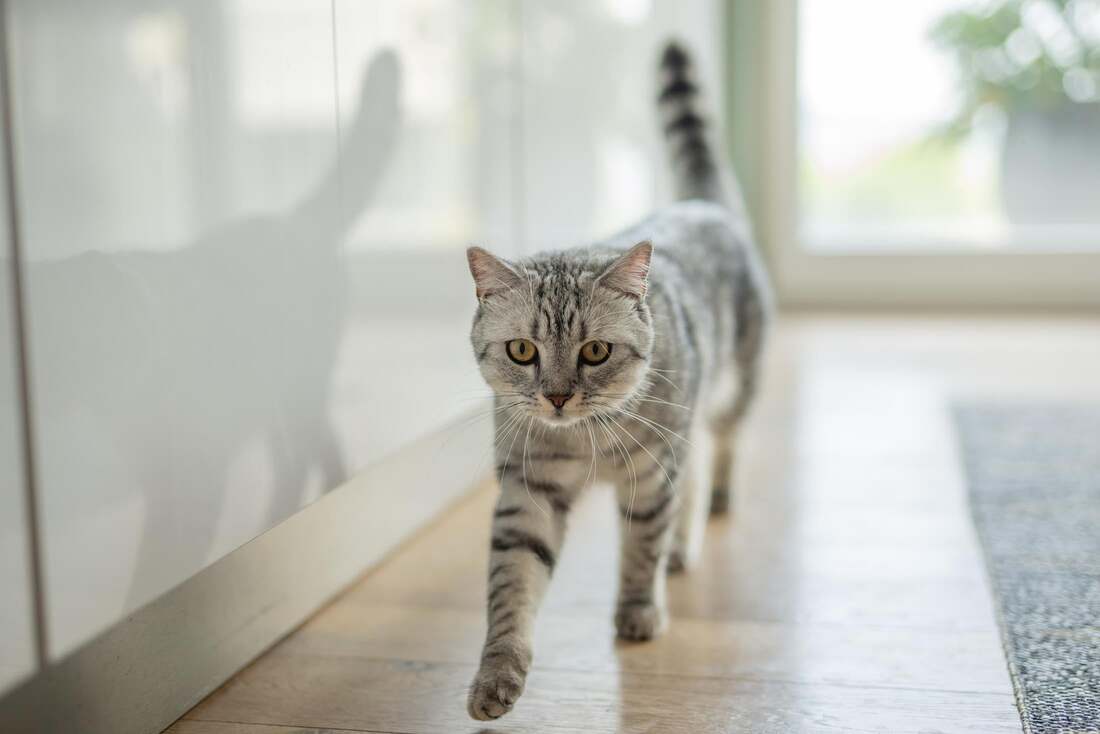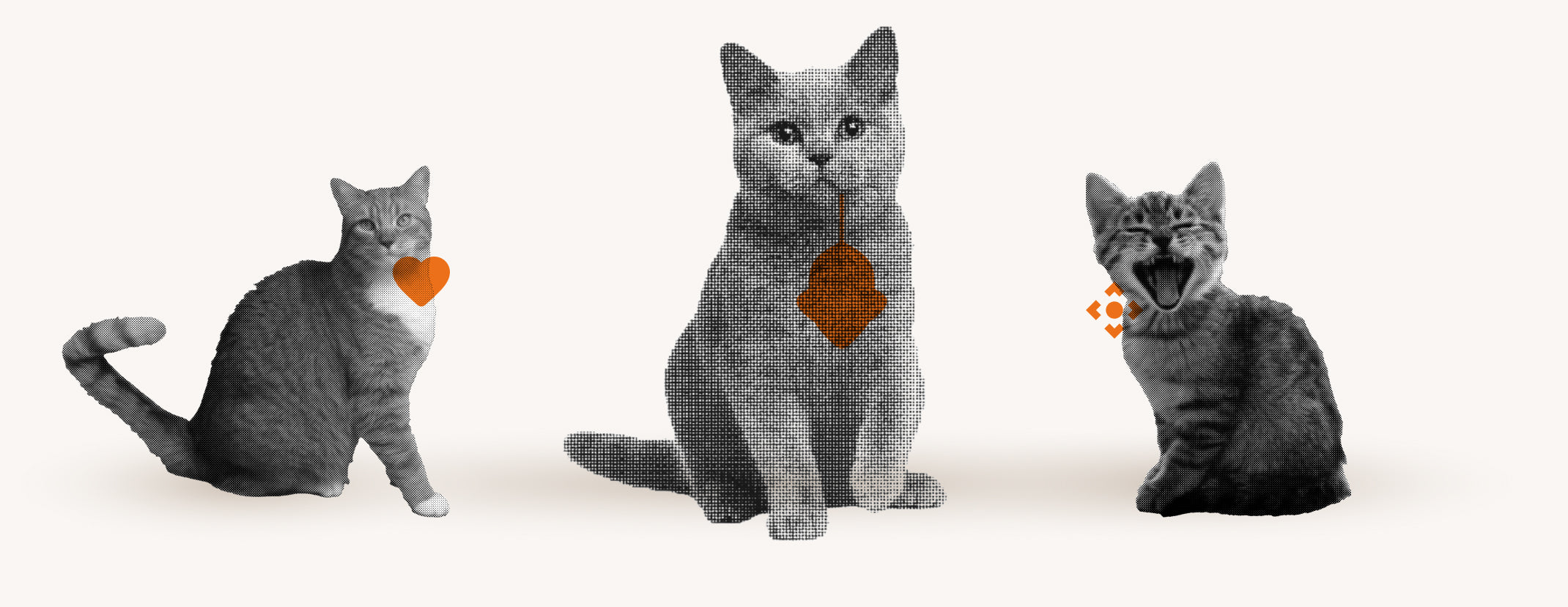Have you ever wondered how long our furry British Shorthair cats can stay with us? It's only natural that we want our beloved pets to stay with us as long as possible.
British Shorthair cats typically live between 12 and 18 years, with some even reaching a proud age of over 20 years.
In this article, we delve deep into the world of British Shorthair cats, from their health and life expectancy to grooming tips and nutritional advice to ensure your cat lives a long and happy life.
Health and life expectancy of British Shorthair cats
The health and lifespan of British Shorthair cats are important considerations for all cat owners. This breed is known for its robustness and, with good care and a healthy lifestyle, can reach an age of 16 to 18 years, sometimes even longer. Various factors such as diet, exercise, and regular veterinary checkups play a crucial role in your cat's health and well-being.
Despite their generally good health, British Shorthair cats are not completely immune to breed-specific diseases. It's important to be aware of these potential health issues and take preventative measures to improve your cat's quality of life. Regular veterinary checkups, a balanced diet, and sufficient exercise are key to keeping your British Shorthair healthy and maximizing its lifespan.
Diseases in British Shorthair Cats
British Shorthair cats are known for their robust health, but there are specific diseases that can occur more frequently in this breed. Among the most well-known are hypertrophic cardiomyopathy (HCM) and polycystic kidney disease (PKD). Both diseases can have a serious impact on your cat's health and should be detected early through regular checkups with your veterinarian.
Hypertrophic cardiomyopathy is a heart condition that often requires medication, while polycystic kidney disease is characterized by kidney cysts that can appear at a young age. Early detection and treatment are crucial to slowing the progression of these diseases. Taking responsibility for your cat's health, including regular veterinary checkups, is essential.
Proper nutrition for British Shorthair cats

Proper nutrition plays a vital role in the health of every cat, especially British Shorthairs. A balanced diet, rich in protein and low in carbohydrates, helps prevent obesity and supports a healthy lifestyle. It's important to choose high-quality food that meets your cat's nutritional needs and has a high meat content.
Besides choosing the right food, it's also important to adjust the amount of food according to your cat's activity level and age. Being overweight can lead to a number of health problems, so it's crucial to control portion sizes and encourage your cat to exercise regularly. Fresh water should always be available to ensure hydration and support kidney function.
Profile of British Shorthair cats

The British Shorthair, often abbreviated as BSH, is one of the most popular cat breeds worldwide. Originally from Great Britain, this breed is known for its distinctive build and dense coat. The British Shorthair is characterized by a muscular and powerful body, a round head, and large, wide-set eyes. Its coat comes in over 70 color variations, including solid, tabby, and tortoiseshell patterns. Particularly striking are its eye colors, which can range from deep orange to green to blue. Other characteristic features include:
- Body type: Muscular and strong, with a medium to large build.
- Coat: Short, dense, and with a fine undercoat that requires regular grooming.
- Eyes: Large, round, and in various bright colors.
The history of British Shorthair cats
British Shorthair cats, often affectionately called BSHs, have a fascinating history dating back to the Roman Empire. It is believed that the Romans first brought cats to Great Britain to use as mousers and ratters. Over the centuries, due to the island's isolation, these cats developed distinctive characteristics that are now characteristic of the breed. However, the selective breeding of the British Shorthair only began at the end of the 19th century. A significant milestone in the breed's history was the exhibition of the first British Shorthair cat in 1871 at the Crystal Palace in London, which immediately gained immense popularity. Despite setbacks caused by the World Wars, which decimated the population, breeders managed to increase it again by crossbreeding with other breeds, such as the Persian cat. Today, the British Shorthair is one of the most popular cat breeds worldwide, known for its sturdy build, large, round eyes, and dense coat.
The character of British Shorthair cats

British Shorthair cats are known for their calm and even temperament , making them ideal pets, especially in households with children or other pets. They are sociable and affectionate without being intrusive. Their love of relaxed companionship is evident in the following characteristics:
- They enjoy being near their humans without constantly demanding attention.
- British Shorthair cats are patient and not easily disturbed, which makes them particularly attractive to first-time owners.
- Despite their calm nature, they have a playful side, especially as kittens and young cats, and enjoy interactive games that stimulate their minds.
This combination of calmness, patience and playfulness makes the British Shorthair a wonderful companion for all situations.
Color variety of British Shorthair cats

The color variety of British Shorthair cats is truly impressive and an aspect that particularly fascinates many cat lovers about this breed. From classic colors like blue and cream to more exotic shades like lilac, there is a wide range that makes each British Shorthair cat unique. Particularly interesting are:
- The classic colors such as blue (a soft grey-blue) and cream (a light, almost pastel orange),
- More exotic shades such as Lilac , which is a grey color with a hint of lavender, and many other variations.
This wide variety of colors allows cat lovers to find a British Shorthair that perfectly matches their personality and appearance. Each color has its own unique charm and makes these cats truly eye-catching.
Species-appropriate husbandry of British Shorthair cats
Providing appropriate care is crucial to maximizing the well-being and lifespan of your British Shorthair cat. British Shorthairs are known for their calm and even-tempered nature, meaning they can thrive in both apartment living and outdoor homes. However, to ensure your cat remains happy and healthy, it's essential to provide an environment that encourages their natural instincts. These include:
- Safe climbing opportunities such as scratching posts or shelves.
- Hiding places to satisfy their hunting instinct.
- Toys that challenge them mentally and physically.
For British Shorthair cats that are allowed to roam freely outdoors, it's especially important that they can return home safely. A cat-proof garden where they can explore nature without being exposed to danger is ideal. If you live in an apartment, you can provide your cat with a secure balcony or window perches to observe the outside world. Regular interaction and playtime are also crucial for strengthening the bond and keeping your cat active. In short, providing a species-appropriate environment takes into account both the physical and emotional needs of your British Shorthair cat to ensure a long and happy life.
Grooming tips for British Shorthair cats

Proper grooming of your British Shorthair cat is crucial for a long and healthy life. Regular brushing is an important part of this, especially during shedding season, to remove loose hair and prevent hairballs. It not only helps keep your cat's coat shiny and clean but also provides an opportunity to detect skin problems or parasites early. In addition to coat care, regular checks of the ears, eyes, and teeth are important to treat any potential infections or dental issues promptly.
Another key aspect of care is proper nutrition . British Shorthair cats are prone to weight gain, so a balanced diet is crucial. Choose high-quality food that meets your cat's nutritional needs and isn't too high in calories. Fresh water should always be available. Remember that every cat has individual needs. What works for one cat might not work for another. Therefore, it's important to talk to your veterinarian regularly to ensure your British Shorthair cat's health and well-being are optimally supported.
Price information for British Shorthair cats
If you're interested in buying a British Shorthair cat, it's important to know that prices can vary depending on several factors such as age, pedigree, and color. Generally, prices for pedigree kittens start at around €900, but can be significantly higher for cats approved for breeding. When buying, you should ensure that the price not only covers the initial purchase cost but also reflects the breeder's careful upbringing and care of the cats. Costs included in the purchase price include:
- Veterinary visits for examinations, vaccinations and deworming
- Breeding club fees and costs for certificates and pedigrees
- High-quality nutrition and general care
- Initial equipment for the kittens
A price that is too low should therefore make you suspicious and prompt you to examine the legitimacy of the offer more closely.
Buying guide for British Shorthair cats
If you're considering buying a British Shorthair cat, there are a few important points to keep in mind. First, it's crucial to find a reputable breeder who offers healthy cats with a good pedigree. The price of a kitten can vary, but expect to pay at least €900 for a purebred British Shorthair with a pedigree. Here are some tips to help you with your search:
- Do thorough research before choosing a breeder. Reputable breeders prioritize the health and well-being of their animals.
- Visit the breeder in person to get an idea of the living conditions.
- Pay attention to the health of the kittens and ensure that all necessary vaccinations and examinations have been carried out.
A reputable breeder will gladly answer all your questions about care, nutrition, and the breed's characteristic traits. Remember that buying a British Shorthair cat is a long-term commitment, so choose carefully to find a furry friend that fits your lifestyle.
British Shorthair Cats and Allergies
Many people wonder if British Shorthair cats are suitable for allergy sufferers. The truth is that allergen release can vary greatly from one cat to the next , so it's impossible to say definitively that all British Shorthair cats are hypoallergenic. For allergy sufferers, it can be helpful to take a few steps to determine if a particular cat is suitable for them:
- Direct contact : It is recommended to spend time with the cat, pet it, and observe how your own body reacts.
- Visiting the breeder : Some breeders allow prospective buyers to experience the cats in their familiar surroundings, which can give a better impression of possible allergic reactions.
- Allergy tests : Before making a purchase, an allergy test at the doctor's office can clarify whether and to which allergens one reacts.
It is important to be aware that there are no guaranteed allergy-free cats, but through careful planning and testing, a suitable cat can sometimes be found that causes only minimal allergic reactions.
British Shorthair and Chartreux: A comparison
An interesting aspect that cat lovers often discuss is the comparison between British Shorthair and Chartreux cats. Although they may appear similar at first glance, there are some distinct differences that make each breed unique. For example, the British Shorthair has a very dense, plush coat with a strong undercoat, giving it a rounded appearance, while Chartreux cats have a finer, closer-lying coat and appear more slender overall. Other distinguishing features include:
- Body type : Chartreux dogs are longer-legged and slimmer, British Shorthairs appear more robust.
- Facial shape : Carthusian horses have a narrower face and larger, more pointed ears.
- Tail : The tail of the Chartreux is longer and thinner, compared to the short, thick tail of the British Shorthair.
- Eye color : British Shorthairs often have bright orange to copper-colored eyes, a distinctive feature that differentiates them from Chartreux cats. These differences make it possible to distinguish the two breeds upon closer inspection and to appreciate their respective characteristic traits.
How Flappie can enrich the life of your British Shorthair cat
Flappie has developed an innovative solution that can enrich the life of your British Shorthair cat and your home. The Flappie smart cat flap is not just a passageway for your cat; it also offers selective access control and prey detection through AI-powered camera technology. This means your cat can come and go freely without bringing unwanted "gifts" like mice or birds into the house. The advantages are clear:
- A cleaner and healthier home without loot.
- Less worry for you as a cat owner.
- More freedom and adventure for your cat, without compromising on safety.
In addition to the smart cat flap, Flappie offers a remote control app that allows you to monitor your cat's activities and control the cat flap as needed. You'll receive push notifications when your cat goes in or out and can even view videos and photos of their adventures. These features not only foster a closer bond between you and your cat but also give you peace of mind when you're away from home. The Flappie app makes it all possible.
- Always be informed about your cat's activities.
- To control access remotely.
- To capture and share unique moments of your cat.
Frequently Asked Questions
How old can a British Shorthair cat get?
British Shorthair cats typically live between 12 and 18 years, with some even reaching the impressive age of over 20. Their lifespan depends heavily on grooming, nutrition, and regular veterinary checkups.
Are British Shorthaired Pointers prone to disease?
Despite their general robustness, British Shorthair cats are not entirely immune to breed-specific diseases. Specific conditions that can occur more frequently in this breed include hypertrophic cardiomyopathy (HCM) and polycystic kidney disease (PKD). Early detection and treatment of these diseases are crucial to slowing their progression. Regular veterinary checkups, a balanced diet, and sufficient exercise are important for maintaining your cat's health.





Share:
How old do Persian cats get? A comprehensive guide
How many mice does a cat eat daily?